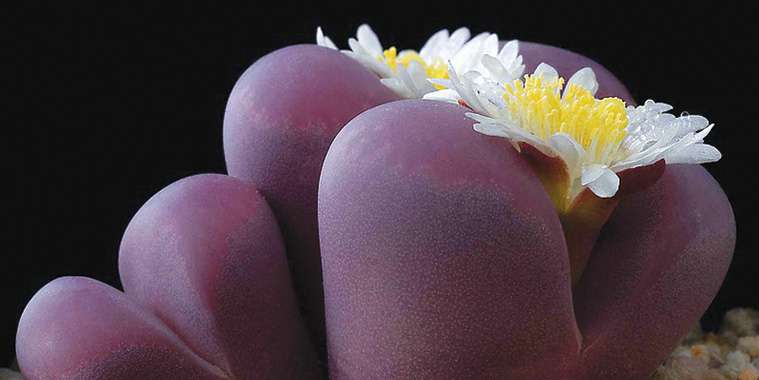By Dorothy Dobbie
Today, there is much fascination with succulents. These are plants that have developed self-watering mechanisms in their leaves, stems and sometimes roots, recognizable by their fleshiness.
One of the most unusual of these is the “living stone,” lithops.
Part of the ice plant family, it is native to southern Africa and the word lithops derives from Greek lithos, meaning stone and ops, meaning face. Therefore lithops is singular as well as plural. One nickname is pebble plant because they literally look like the rocky terrain they grow in. They are masters of camouflage. This habit is one of survival to prevent them from being eaten in a sometimes harsh land where anything living is fair game.
Lithops generally consists of a pair of swollen leaves, often in colours of brown, cream, burgundy or gray, patterned at times with dots or lines, and with a slit between them. Herein hides the meristem (the growing tip) where the flowers will later emerge. The leaves are not large, about one-half to one- and-a- half inches across. Their genius is in the colour which adapts very convincingly to mimic the surrounding terrain.
If you come across a lithops in the wild, what you might see is just the surface of the plant with most of the leaf buried below the soil. Look closely at the surface and you will see it is translucent, a device known as the leaf window, that lets in sunlight for photosynthesis.
If things get really rough, as in a drought, the leaves may shrink and disappear into the soil
altogether. But when the rain falls and the sun shines, a little miracle occurs with the emergence of the leaves from under the ground followed by the flowers.
You would think that such a shy little plant could take care of its own pollination, but instead, lithops requires cross pollination from a separate plant while it is in flower. It propagates through dispersal of its seeds by raindrops falling on the seed capsule. The dampness causes the capsule to open and allow the force of the drops to scatter the tiny seeds from a few inches to several feet. They also divide themselves into new plants through splitting.
This little plant lives a long life — up to 50 years! You can grow them indoors in a sunny
window where they can survive for many years under the right conditions, dividing and filling their potted home. They need at least four to five hours of direct sunlight a day.
The biggest challenge is watering, which should only occur from late spring into summer. When the plant goes dormant in summer, stop watering and resume in late summer or early fall. This is a fascinating species with a stunningly bright flower. Some of the flowers are scented.
They are not hard to grow and are not even that expensive. You can get seeds from Veseys.
Dorothy Dobbie is the owner of Pegasus Publications, the publisher of Local Gardener & Manitoba Gardener.



